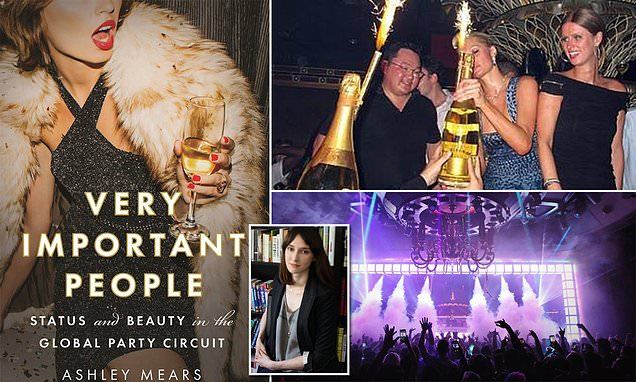


04/03/2022
From Richard Ngo’s Thinking Complete blog:
Book review: Very Important People

New York’s nightclubs are the particle accelerators of sociology: reliably creating the precise conditions under which exotic extremes of status-seeking behaviour can be observed. Ashley Mears documents it all in her excellent book Very Important People: Status and Beauty in the Global Party Circuit. A model turned sociology professor, while researching the book she spent hundreds of nights in New York’s most exclusive nightclubs, as well as similar parties across the world. The book abounds with fascinating details; in this post I summarize it and highlight a few aspects which I found most interesting.
Here’s the core dynamic. There are some activities which are often fun: dancing, drinking, socialising. But they become much more fun when they’re associated with feelings of high status. So wealthy men want to use their money to buy the feeling of having high-status fun, by doing those activities while associated with (and ideally while popular amongst) other high-status people, particularly beautiful women.
Unfortunately, explicit transactions between different forms of cultural capital are low-status — it demonstrates that you can’t get the other forms directly. So the wealthy men can’t just pay the beautiful women to come party with them. Instead an ecosystem develops which sells sufficient strategic ambiguity to allow (self- and other-) deception about the transaction which is taking place, via incorporating a series of middlemen.
Specifically, wealthy men pay thousands at these nightclubs for table charges and “bottle service” — already-expensive alcohol marked up by 5x or much more. The nightclubs pay “promoters” to scout out and bring along dozens of beautiful women each night. Those women get access to an exclusive venue with many wealthy men — but by itself that’s not enough to motivate regular attendance, at least not from the prettiest. And most are careful not to ruin their reputations by actually accepting payments from the promoters. Instead, in order to bring enough girls, promoters each need to do a bunch of emotional labour, flirting, relationship-building, and many non-cash payments (food, transport, even accommodation). …
Some interesting features of this system:
At a top club, a promoter might get paid $1000 a night to bring out a dozen models or women who look like models. Notably, model-like beauty is much more highly-prized than conventional beauty — e.g. the clubs don’t allow access to women who aren’t unusually tall.
That’s wild.
What you really want to go to are the mid-priced clubs favored by the beautiful five-foot-four girls who aren’t allowed into the expensive clubs.
Everyone selects for models even when they don’t personally find the model look as attractive, because the fashion industry has established this as the Schelling look for high-status women. …
From Wikipedia: “In game theory, a focal point (or Schelling point) is a solution that people tend to choose by default in the absence of communication.”
… In contrast to the predominantly-white clients and models, promoters are disproportionately black. Mears talks about them having “colour capital”, and using some stereotypes to their advantage in order to catch attention. They need to be very charismatic and attractive in order to consistently convince girls to come along with them while not making their relationship seem too transactional.
Presumably, promoters are higher class guys than pimps, but have much the same personalities.
In some sense the whole system is grounded in the models’ sex appeal, but I think that the models’ prestige is just as important — as mentioned above, models are preferred to women who most men find more attractive, as well as preferred to women who have more transactional attitudes towards sex.